Water – Making It Personal: Communicating A Sustainable Future
In late November at the Summit on the Global Agenda convened in Abu Dhabi, the World Economic Forum published the new book, Sustainable Consumption: Stakeholder Perspectives. Included is this essay by J. Carl Ganter, Circle of Blue’s managing director. The full book is available for download here.
Since 2006 the World Economic Forum, with its partners and constituents, has been the architect for a successful series of global environmental and natural resource initiatives—in agriculture, climate change, green investment and water security in particular.
[This book] offers a compelling insight into the hearts and minds and life experiences of many of the world’s most well-known corporate and civil society champions for sustainable consumption. More than a technical manual or textbook, their insights offer the human story in how to try and make wholesale change happen, whether in business, government or international organization.
Journalist J. Carl Ganter is the Co-Founder and Director of Circle of Blue and Vice Chair of the Global Agenda Council on Water Security. Carl’s leadership at Circle of Blue was recently rewarded with the Rockefeller Foundation Centennial Innovation Award, given annually to global innovators addressing the world’s most pressing challenges. In this essay, Carl demonstrates how fact-based storytelling conveys complex ideas by making them personal and relevant.
Dominic Waughrey
Senior Director, Head of Environmental Initiatives
World Economic Forum
Geneva, November 2013
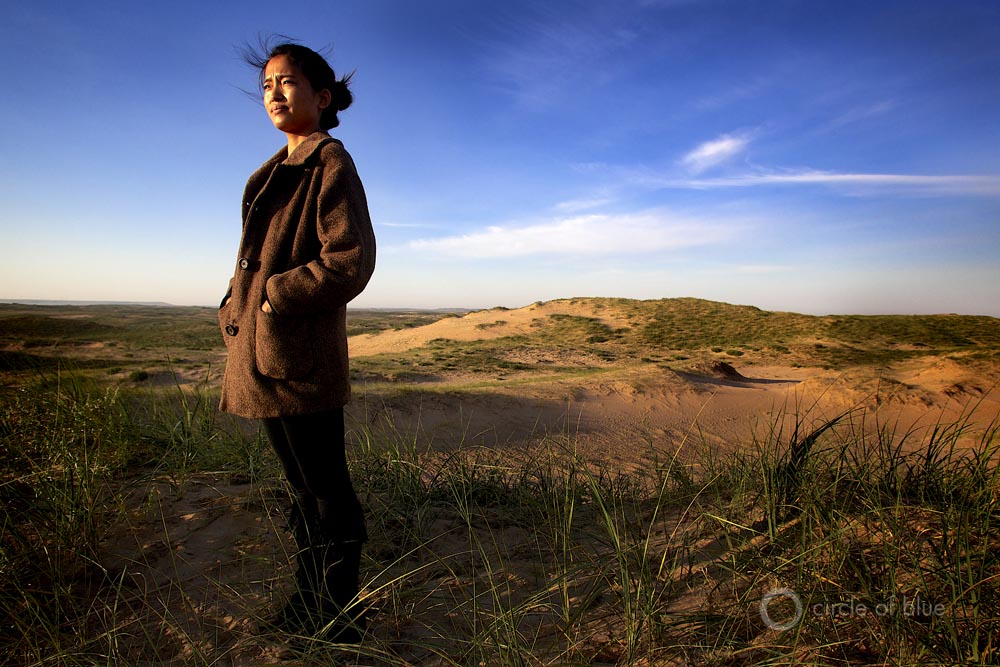
By J. Carl Ganter
Managing Director, Circle of Blue
Vice-Chairman, World Economic Forum Global Agenda Council on Water Security
It was here, the vast grasslands of Inner Mongolia, where Genghis Khan brought his armies to mend their wounds, swim in the Nine Bendings River, fatten livestock and forge their swords. The legendary Mongol conquerors battled the elements, living in the teeth of the wind in their felted gers, 162 founding the nomadic communities that, for dynasties, have raised sheep on these highlands
On the December day when I visit, centuries and civilizations later, frigid blasts of razor-sharp ice crystals – some of them blackened from the dust of nearby open-pit coal mines – blow across the horizon, stopping only to swirl and tear at exposed flesh.
Wu Yun, 23, tucks in her mittens and pulls on furry boots to help her father feed the livestock. She hunkers down, unlatches the gate and lets the lambs out to graze on the fragile, brown stubble. Like minnows, these woolly beasts dart and weave for the open field, protesting the harsh wind with loud baas. An old ram coughs against the cold, stopping for a scratch on the chin.
Wu Yun looks out over the plains, where in summertime she rides her stout horse above the dust. Today the acerbic rasp of smoke from nearby coal-fired power plants is whisked along upon the air. It seems to draw a line between the old and the new that is mirrored on the land below. On one side, gers and sheep. On the other, 300-metre-high (1,000-foot-high) buttes made of tailings from Datan International Shengli Mine, China’s largest brown coal mine, which officials say could become China’s largest open-pit mine in a few years.
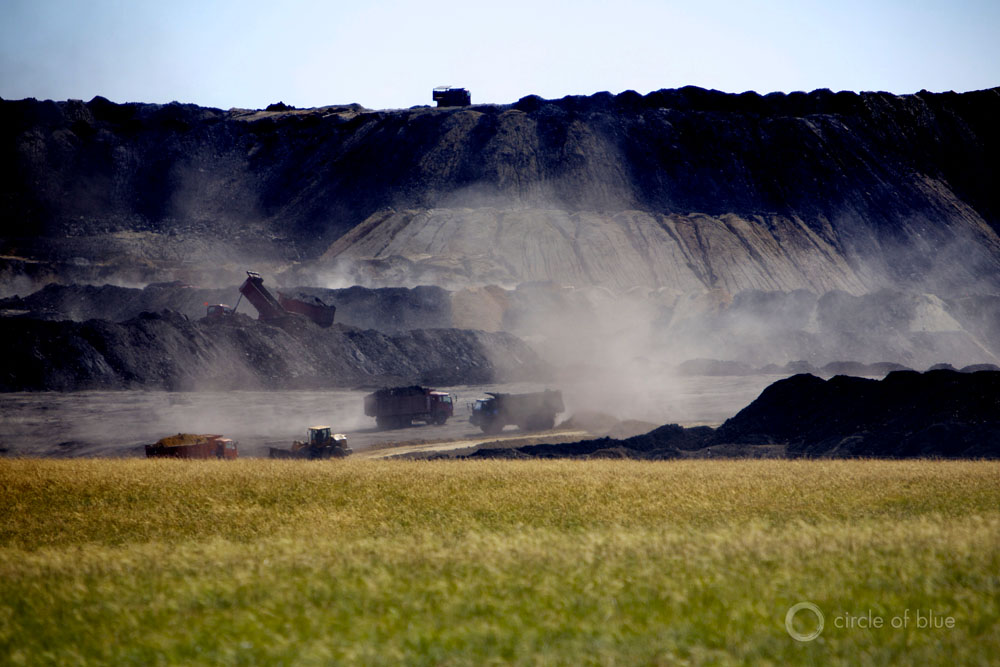
Brown coal, which has lower energy content than black coal, is the fuel of choice in this part of Inner Mongolia. It is the power source for giant electrical generating plants. It is also piled outside the smallest rural homes, including Wu Yun’s, where it is used for cooking and heating.
Her father, Bao Zhu, swings a hammer to break loose a few pieces of the frozen coal mound outside their front gate. They carry it in together and feed it to the fire in the kitchen where a pot of milk tea boils on the stove. The heat begins to melt the frost on the windows.
This shepherd family’s life is still guided by the rhythms of the seasons and of the hardy sheep, shaggy cows and swift horses able to withstand the -30C (-20F) temperatures and fiercely biting wind. But the pile of coal that heats their home in winter is an unmistakable sign of the growth and impact of the consumer society, eroding cultural traditions in the swift current of consumer dreams. For in the valley below, in nearby Xilinhot, they see Inner Mongolia’s future.
Modernization in an Energy Economy
Xilinhot – an outpost of 177,000 residents that is 600 kilometres (373 miles) and a 12-hour train ride north of Beijing – is at the forefront of the world’s energy and consumer economy. Just 30 metres (100 feet) below the family’s fields are the rich veins of the coal that power a nation and drive global markets.
Within the next three years, say Wu Yun’s parents, the mining company will come to develop the seam under their feet. There will be a fair offer they can’t refuse, they tell me, and they will accept it willingly. They will pack their giant pot of milk tea, sell their horses, cows and lambs, and move to the city, to an apartment near relatives who have already made the migration.
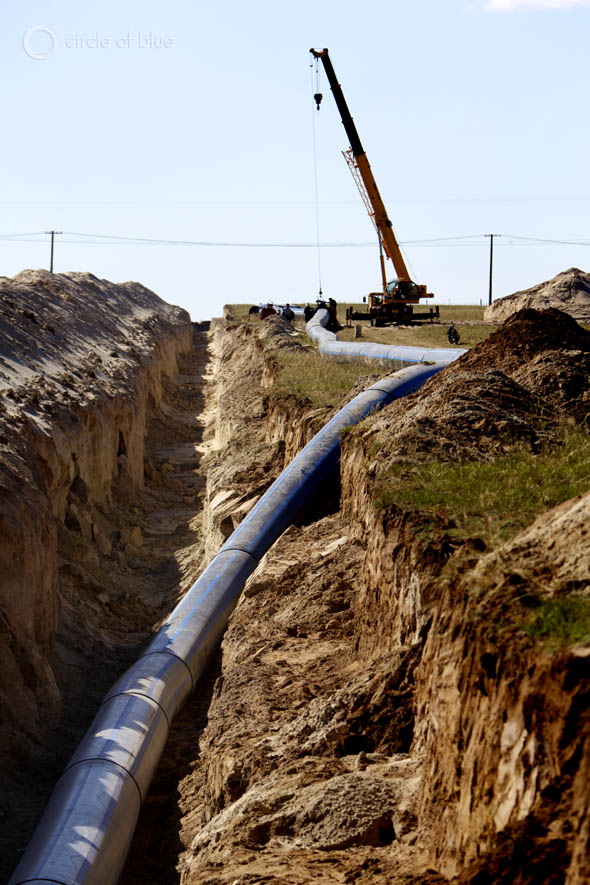
“When family comes here to visit from the city, they catch cold,” says Bao Zhu. “When we go to the city, we are too warm.”
Xilinhot is at the centre of the Xilin Gol Grassland, one of China’s largest prairies and livestock production regions. The Xilin Gol Grassland has suffered severe sand encroachment and desertification. And now the timeless lifestyle of pastoral farmers faces yet another challenge: the city will also need more water to hydrate its thirsty mines as well as the growing population. Already, Wu Yun’s family well has gone dry, drained by the mines, and they have to use a tractor and trailer to fetch water from 15 km (9.3 miles) away.
Xilinhot has proven coal reserves of about 30 billion metric tons (33 billion short tons), 163 and provincial and academic authorities say its unproven reserves total to hundreds of billions of metric tons, which alone could power the country for 425 years. Xilinhot’s bounty travels to power plants as far away as the Yangtze River Delta region, making the city a strategic energy supplier.
Additionally, more than 30 kinds of minerals have been found in the area, one of which is germanium. The rare-earth mineral, a semi-conductor metalloid, is a by-product of the pulverizing process of Xilinhot’s brown coal. The crushed coal rumbles along kilometres of conveyor belts in the local mill. The factory hisses and moans in the frozen sunrise, churning out the white powder, which, ironically, is a key ingredient in the production of solar cells and the circuitry that controls the high-tech and cleaner energy alternatives such as wind farms and smart grids.
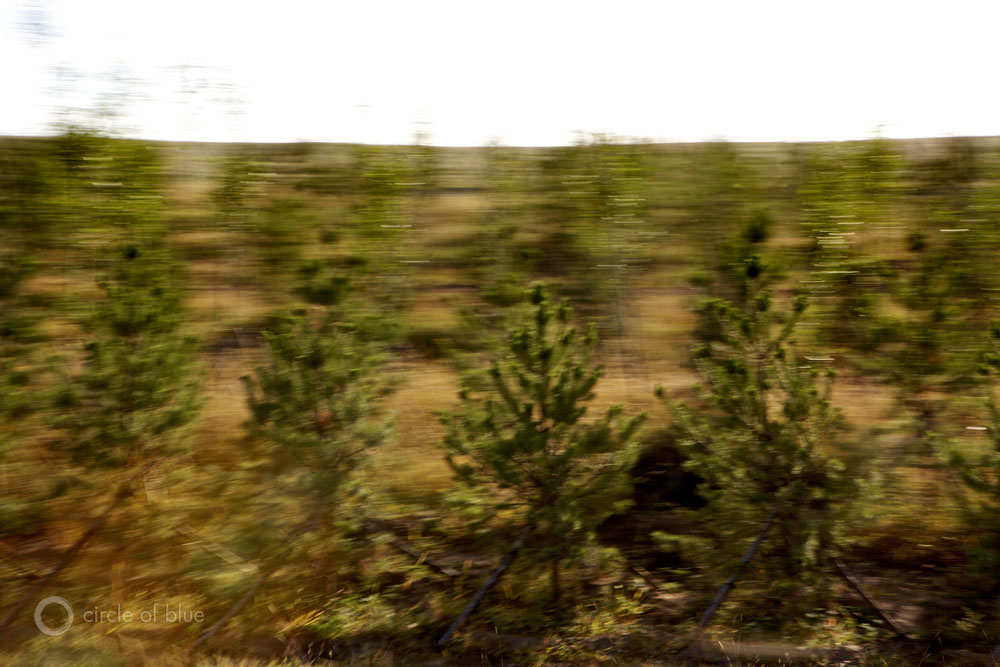
Wu Yun puts down her cup of milk tea and gazes out the frosty window toward Xilinhot’s smokestacks. She is part of the urban movement, and she’s already made plans. Wu Yun is studying accounting and wants to open an upscale clothing store to serve the city’s newest residents, the families of the well-paid miners and workers who come to dig the coal. She represents a new generation, severed from tradition, pulling up roots in the grasslands and seeking success where it is defined not by what you can grow but by what you can make and what you can buy.
Two months before I visited Xilinhot, in comparatively balmy Beijing, I found myself in a sea of umbrellas in the Sanlitun shopping arcade, brand-conscious stores nested in an urban mall. Outside the Apple store, hundreds of people awaited the unveiling of the first-generation iPad. Cheered by Apple employees wearing blue T-shirts, the customers, many who had encamped for hours, dashed through the doors to capture the coveted tablet. The world, their dream, is only a touch away.
On the surface, Chinese consumerism is bright, bold and blatant. Branding is everywhere, and the iPhone, with which I photographed the Apple crowd, is a symbol of status and constant connectivity. “In Chinese consumer culture, there is a constant tension between self-protection and displaying status,” wrote Tom Doctoroff, author of What Chinese Want: Culture, Communism, and China’s Modern Consumer and the North Asia director and Greater China CEO for J. Walter Thompson, a global marketing communications brand. “Material similarities between Chinese and Americans mask fundamentally different emotional impulses.” 164.
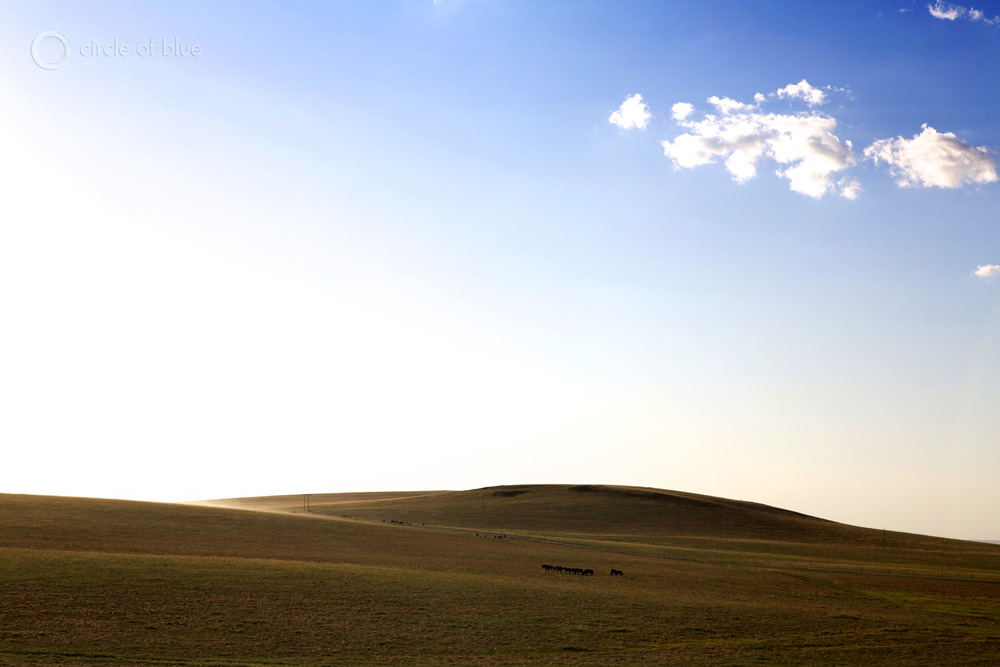
According to a recent McKinsey study, “Meet the 2020 Chinese Consumer,” published in 2012, “consumption, rather than investment, will be the driving force in Chinese growth. It will account for 43% of total GDP growth by 2020…. By 2020, some 850 million people, representing about 60% of the total [Chinese] population, will be living in urban areas, up from about 650 million in 2010. Around 20% of these 850 million will be first-generation migrants from rural areas.” 165 Each of these migrants, like Wu Yun, is an individual making choices in response to a changing world. Pushed by the loss of grasslands and pulled by the lure of the city’s treasures, she lives a story that is a metaphor for a tidal shift in a nation’s culture.
“Design is hope made visible,” says Brian Collins, a branding expert who has shaped the dreams and desires of a generation. “By creating a tangible vision of what could be, we can see, touch and examine the future before it arrives.” At Circle of Blue, our journalists and scientists delve deep into the narratives that set trends and chart new courses for the future.
Some of these stories are subtle, some are shocking, but all reveal the connections between the conditions in which we live and the choices that we make – choices that in turn affect the conditions and options for the future. In the same way we learn about Wu Yun and her family, we gather the empirical data that shape the context of their lives. We understand them at a human level while also making the information useful and relevant to scientific analysis. Both approaches are vital for enabling the will and the ability to make informed choices.
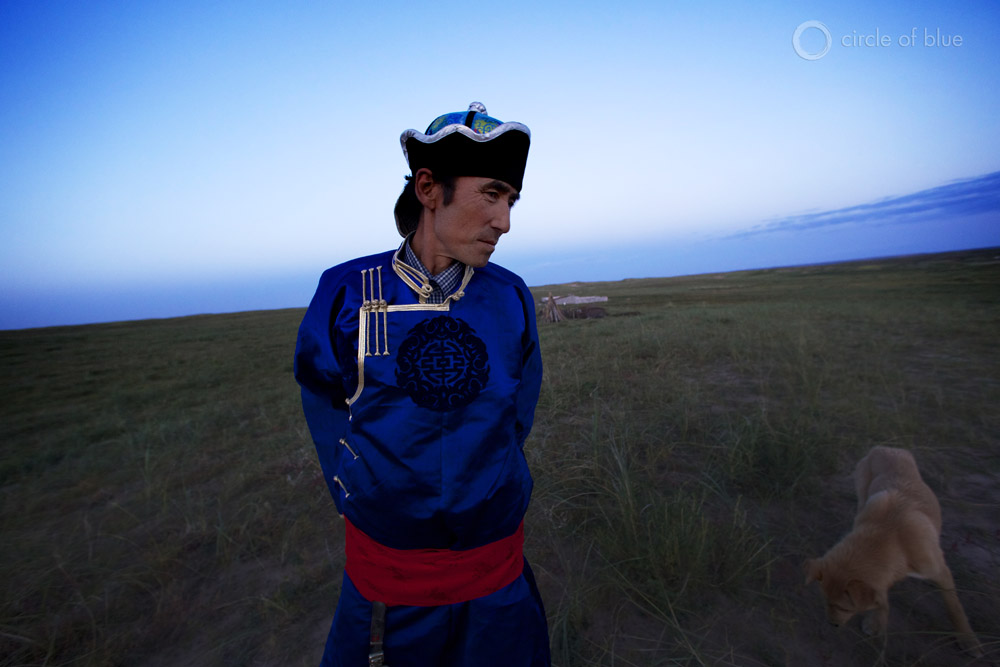
Throughout history, journalism and storytelling have defined civilization. Journalists are the first responders to global crises, the pointers to important trends and the translators between disciplines. Good journalists seek out knowledge, ask thoughtful questions, listen carefully and tell unforgettable stories. The art of the story, well-told, is a powerful force because it compels the resilience and connectedness of humanity.
In China, we have one of the richest, most complicated stories unfolding that the planet has ever seen. The country is the second largest economy after the US, and its economy tripled between 2000 and 2010. China’s GDP is expected to grow by more than 7% each year over the next 10 years.166
Yet our reporting found that the priceless energy beneath Wu Yun’s family grasslands may be trapped. China faces severe constraints to its GDP growth because it may not be able to continue to mine and process its coal at current rates. 167 Mines use copious amounts of water to extract and process coal, and as water supplies dwindle, production will slow.
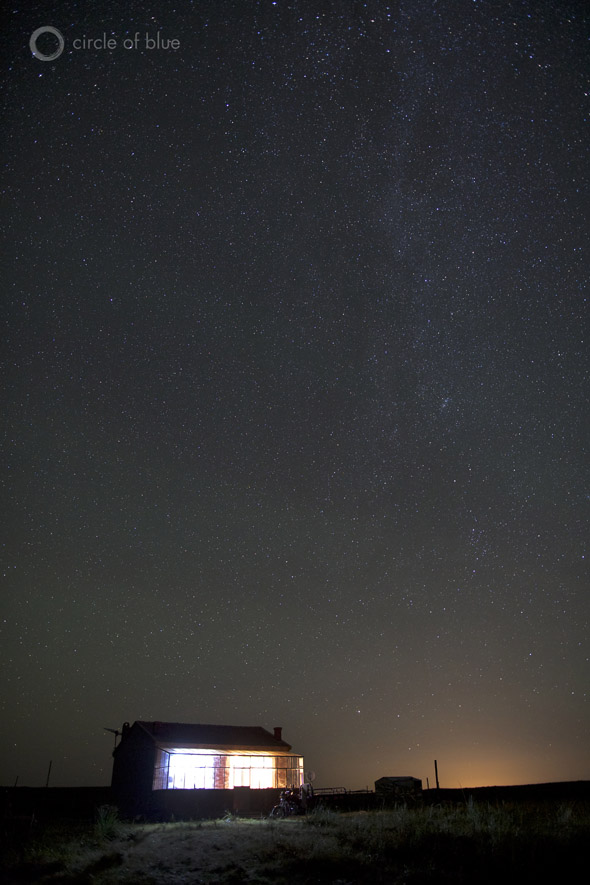
Just as the account of Wu Yun’s life and choices framed the reporting that introduced the existence of water and energy stresses in Inner Mongolia and China, lives of people offer keen insight into the challenges and opportunities of sustainability, consumption and the dreams that drive them.
A Thirsty World
In Australia, rice farmers gave face to an epic drought as they walked with us, kicking dusty clods of dirt that used to be their rice paddies. An Aboriginal elder, Beryl Carmichael, took us aside and fed us stewed kangaroo meat while sitting on the edge of the desiccated Darling River. She gave voice to the legends of stewardship of the drying region, how cultures over thousands of years survived the water’s ebbs and flows. In recent times, Australia’s post WWII boom tested a delicate balance of nature, and perhaps could have found clues to resiliency in both data and lore.
Water scarcity has forced a national re-engineering of the Murray-Darling River Basin, the country’s breadbasket, and rethinking about which crops are grown where. Often, behind the obvious, is a struggle to tell a story everyone seems to know. Bronwen Wade, a reporter for ABC “Riverland Today,” told us the drought confounded her own reporter’s instinct, often for the same reasons it challenged those of her Australian audience. Before one news broadcast, Wade said she started to cry. She had been warned that many farmers in her rural community were on the edge of suicide. Simply turning on the microphone and reporting the news could be deadly to her listeners, whose lives and dreams were evaporating as quickly as the water. 168

In Mexico, we brought together leading journalists, photojournalists and development experts to learn from the people of the Tehuacán Valley, a region facing declining aquifer levels under increasing pressure from industrial water extraction. The competition for scarce water between small farmers, whose wells were going dry, and industrial agriculture and textile production, revealed a hidden connection between the dissolution of family culture as children left their ancestral hillside farms to find work in Mexico City and the United States. The tears of Francisca Rosas Valencia were searing as she told the stories of her son and nephew leaving the village. They were bound for the US, but she had not heard from them in more than a year. Sitting in her kitchen as she shared deeply personal moments revealed a valuable piece of the story puzzle: Drought and resource scarcity were driving immigration and tearing at the social structure. 169
In the United States, we explored the sustainability-complex of water, food and energy, working to bring systemic thinking to this constantly shifting nexus, the push and pull between core resources. In an era of climate change and water scarcity, meeting the nation’s energy demand is confronting major impediments. We found new data, new sources and otherwise hidden voices that define a resource challenge that is testing the country’s ability to respond effectively. And the speed and force of the collision is occurring in the places where growth is highest and water resources are under the most stress: California, the south- west, the Rocky Mountain West and the south-east.170
Telling the Story
By instinct, a reporter works in iterative ways, pursuing leads, sources and stories. In many senses, journalism is scientific – testing theories, confirming facts. But the ad hoc web of experts, participants and audience that we form for a story is rich with lasting value. Our data comes in many forms: empirical, anecdotal, sensory and emotional. As we work to understand inflection points in sustainability, consumption and connected, transformative shifts, we need to listen better. We need to monitor the change, again and again. The perspectives, insights, inspirations and aspirations are not often obvious. Sometimes they are just waiting for the right questions.
When we returned to Ningxia, China, to present our findings from Choke Point: China, our series about the water-food-energy challenge,our driver, an eager university professor, greeted us at the airport. The car slowed to a crawl on the highway when he couldn’t contain his enthusiasm about our visit. He talked excitedly – his life’s work has been the study of the interplays of water, food and energy in his province. Yet, until now, no one had asked him for his research data, which was sitting on his office shelf in neatly ordered folders. When he came to greet me at the hotel the next morning, at 5.30 sharp, to take me to the fields where farmers picked at expansive fields in the sunrise, his eyes were red and tired. He had brought his work, which he had painstakingly copied all night. Sometimes the simplest questions and conversations lead to treasure; his numbers synchronized perfectly with nationally significant conclusions we had drawn from other sources and regions.
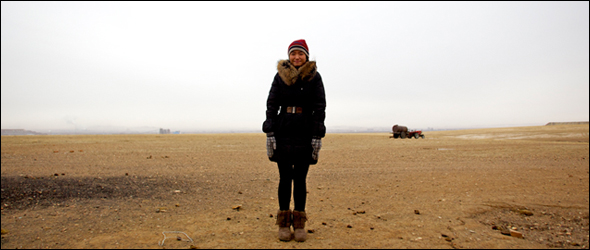
The implications of our China findings struck a chord and captured attention from policy-makers, businesses leaders and risk managers. More than 1,100 people came to hear our Ningxia presentation, which was moved to a basketball arena to accommodate the large audience. Since then, we have hosted dozens of presentations at embassies, agencies, boardrooms and scenario sessions. The water-food-energy story is ongoing and transforming quickly; to keep pace, our reporting is drawing support from the Asian Development Bank, Skoll Global Threats Fund and Packard Foundation, among others.
The research, narrative stories, compelling imagery and the people behind them combine to create powerful feedback loops, connecting large-scale waves of causality with the tiniest of cultural ripples. The storytelling builds better understanding and paints realistic scenarios of what is and what could be. At the core are strong collaborations that combine shared vision with complementary talents. We work with Google Research and its structured data team to develop new tools like Fusion Tables, which is “big data” for the rest of us and allows us to map trends and test theories. Our 10-year partnership with the Woodrow Wilson International Center for Scholars and its China Environment Forum provides access to global networks of scholars and experts who study the links between security, resiliency, politics and environment. Others, such as the Institute for Globally Transformative Technologies at Lawrence Berkeley National Laboratories, give new insight into the world of technological innovation and those who are inventing new ways to manage and use the world’s resources.
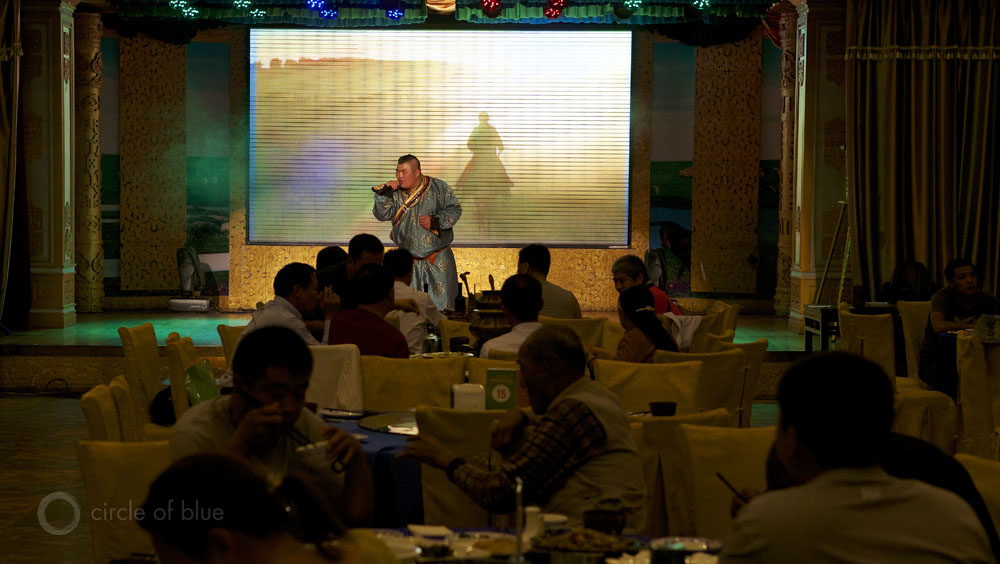
About a year after visiting Wu Yun’s family, I sent an e-mail to see how they are getting along. How are the horses, the sheep? I ask. I imagine the hot tea on the stove, a family living on the edge of tradition and consumerism, where the green grasslands fade to brown and coal is scraped from open pits and sent to power the country’s urbanization and industry. I think about the small windmill they use to charge their batteries that power their cell phones and television that connect them to the world.
Wu Yun responds with a text. She invites me back to visit, to see the grasslands and their horses in early autumn. She includes pictures of her family framed by the sweeping blue skies. Standing next to her mother, who is dressed in the traditional robes of Mongolian shepherd culture, Wu Yun’s brother wears designer jeans and a Salvatore Ferragamo T-shirt.
“I am seeing the London Olympic Games,” she types. “Wishing you a happy heart every day.”
Epilogue
Two months after receiving that text, I arrive at the Xilinhot airport. The familiar gritty haze of the coal mines cuts into the morning sky.
Wearing trendy sunglasses and a bright red shawl, Wu Yun bounds out of a borrowed car with her boyfriend in tow. We head for breakfast and milk tea in the city and she tells me she got a job as an accountant at the hospital. Our language barrier quickly gives way to smiles, nods and the new tool of 3G globalization: Google Translate. As phrases and questions cross our minds, our fingers glide across our smartphones.
At dawn the next morning, after camping in a ger on her sister’s farm on the grasslands, I hike up a nearby bluff. A ribbon of fine sand, this is the edge of desertification, where the dust swirls its way to Beijing and on to Los Angeles when the winds blow hard.
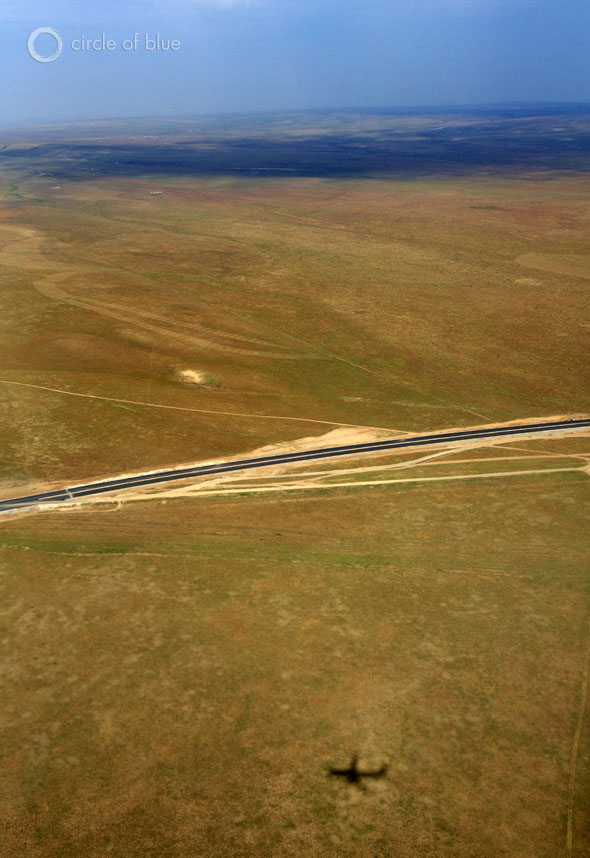
On my last night, Wu Yun’s family takes me to an Xilinhot restaurant where her friends, daughters of other shepherds, perform traditional Mongolian songs on a small stage. Behind them, in the nearly empty room, are videos of vibrant green grasslands, graceful horses and dancing rivers.
“Maybe next time we can go to these places?” I type on my iPhone. But I can tell my question cuts deep and a wistful sorrow crosses her face. The pastoral traditions are fading as the grasslands turn brown from extended drought, declining aquifers and drifting sand. “Is no longer,” her phone’s screen says in English, “Not since the Disaster,” a reference to the climate induced drought and desertification that is taking over her corner of Mongolia.
footnotes
(162) Gers are the portable wood and felt dwellings of Mongolia, round in structure and similar to the yurts of Central Asia.
(163) Schneider, K., “Bohai Sea Pipeline Could Open China’s Northern Coal Fields,” Circle of Blue, 5 April 2011. Available at: https://www.circleofblue.org/2011/world/desalinating-the-bohai-sea-transcontinental-pipeline-could-open- chinas-northern-coal-fields/.
(164) Doctoroff, T., What the Chinese Want, The Wall Street Journal, The Saturday Essay, 18 May 2012. Available at: http://online.wsj.com/article/SB100014 24052702303360504577408493723814210.html.
J. Carl Ganter is co-founder and managing director of Circle of Blue. He is a journalist and photojournalist, recipient of the Rockefeller Foundation Centennial Innovation Award, and an Explorers Club Fellow.

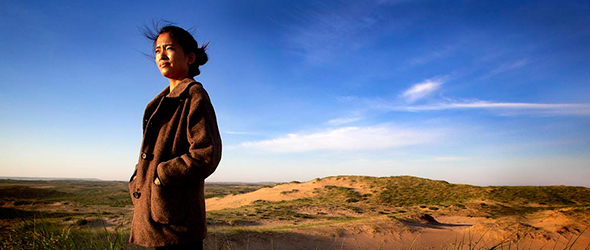
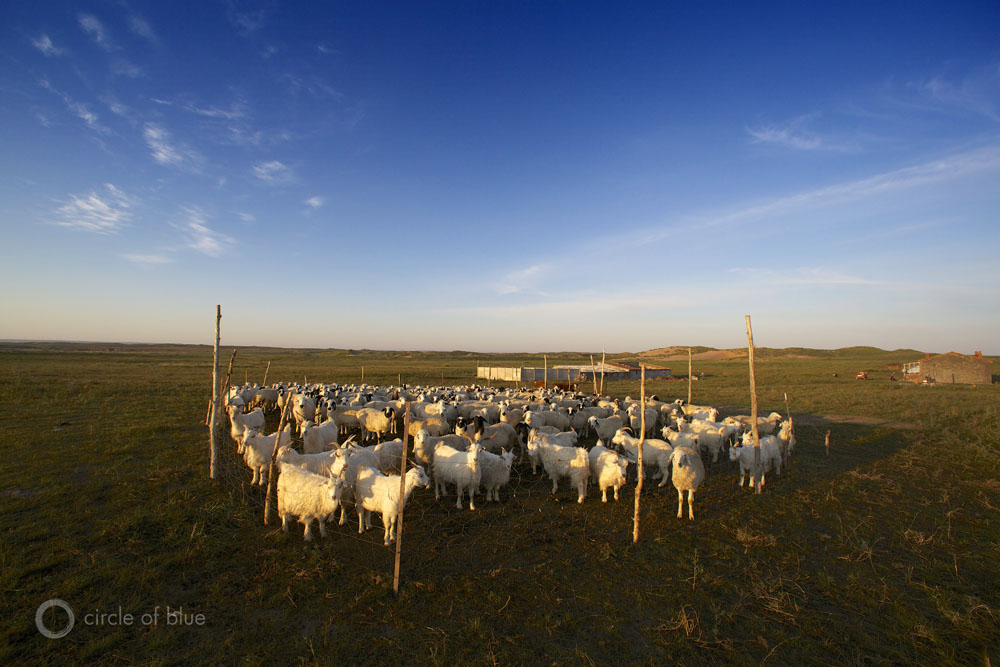
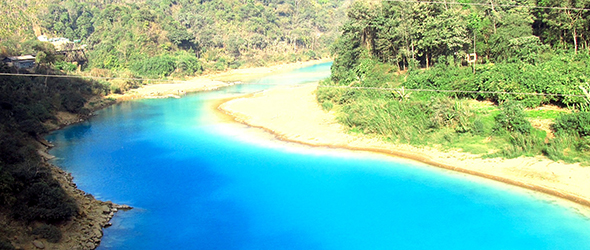
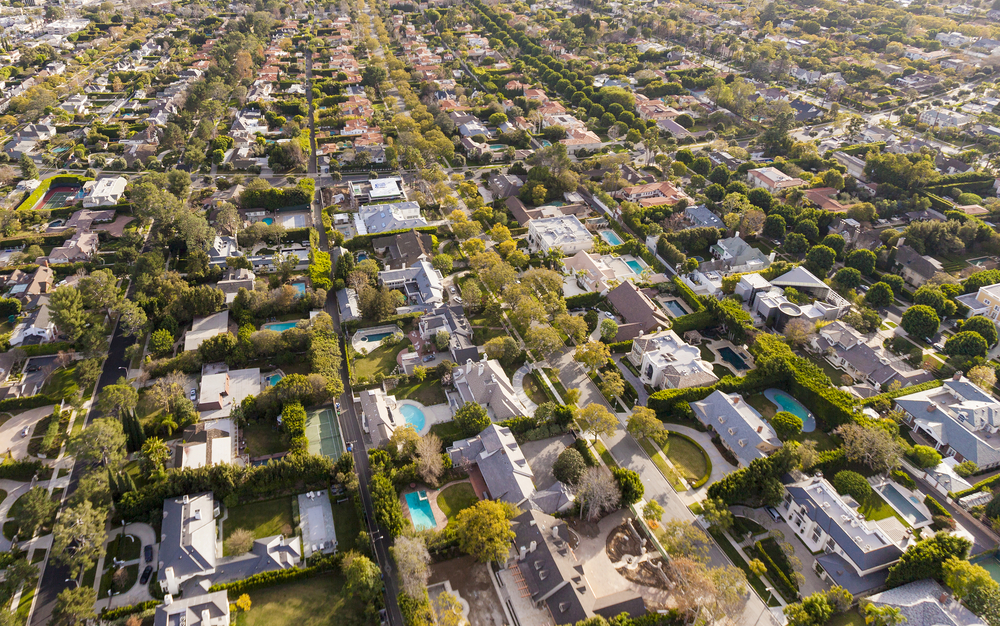
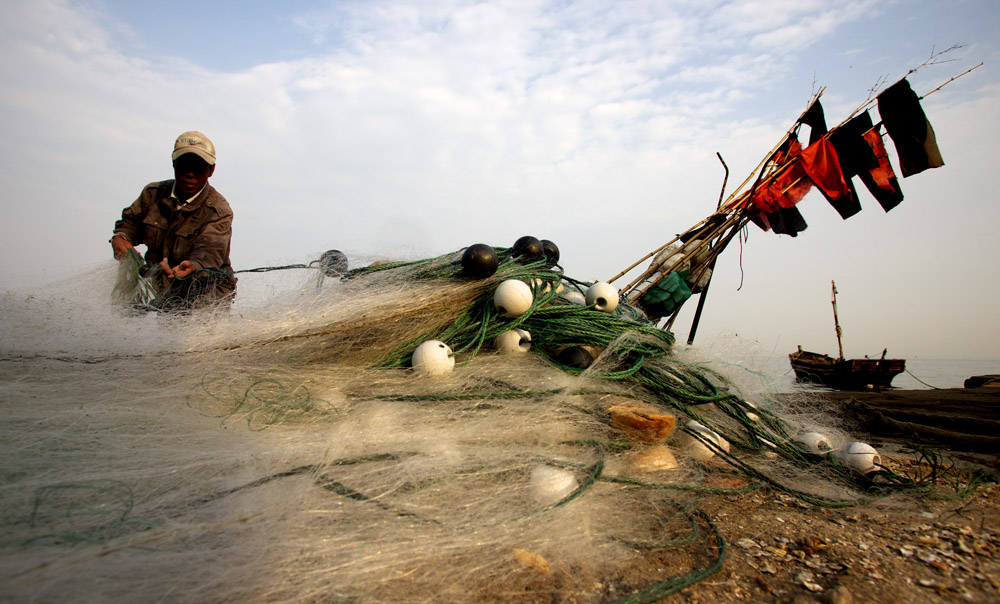
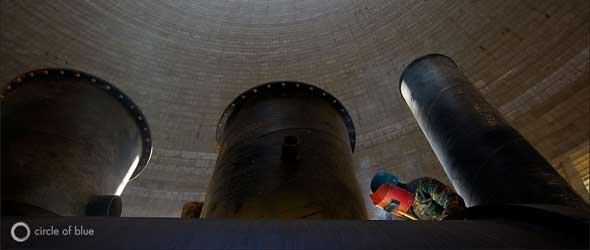



Excellent beat ! I would like to apprentice
even as you amend your web site, how can i subscribe
for a weblog site? The account aided me a applicable deal.
I had been tiny bit acquainted of this your broadcast offered shiny
clear concept